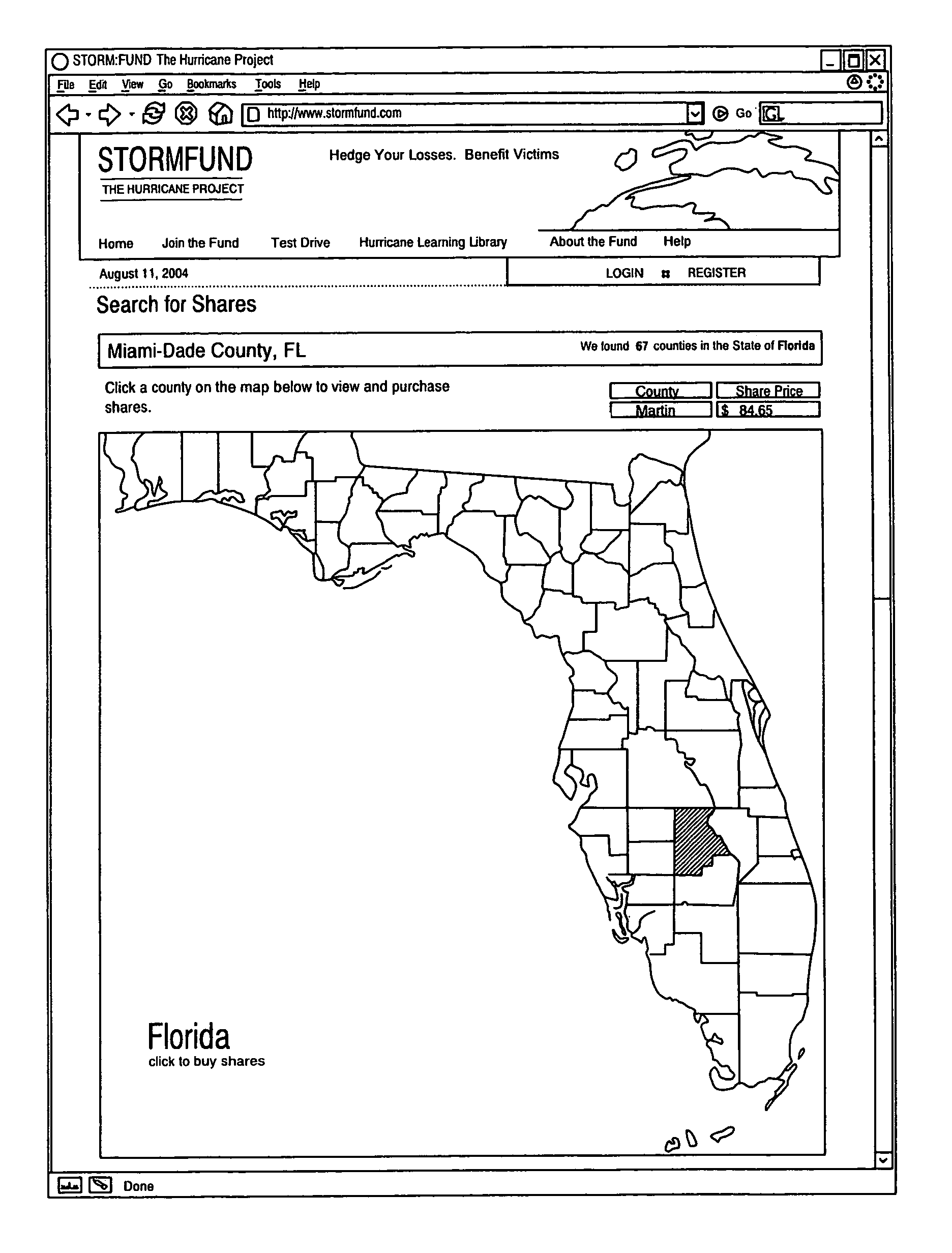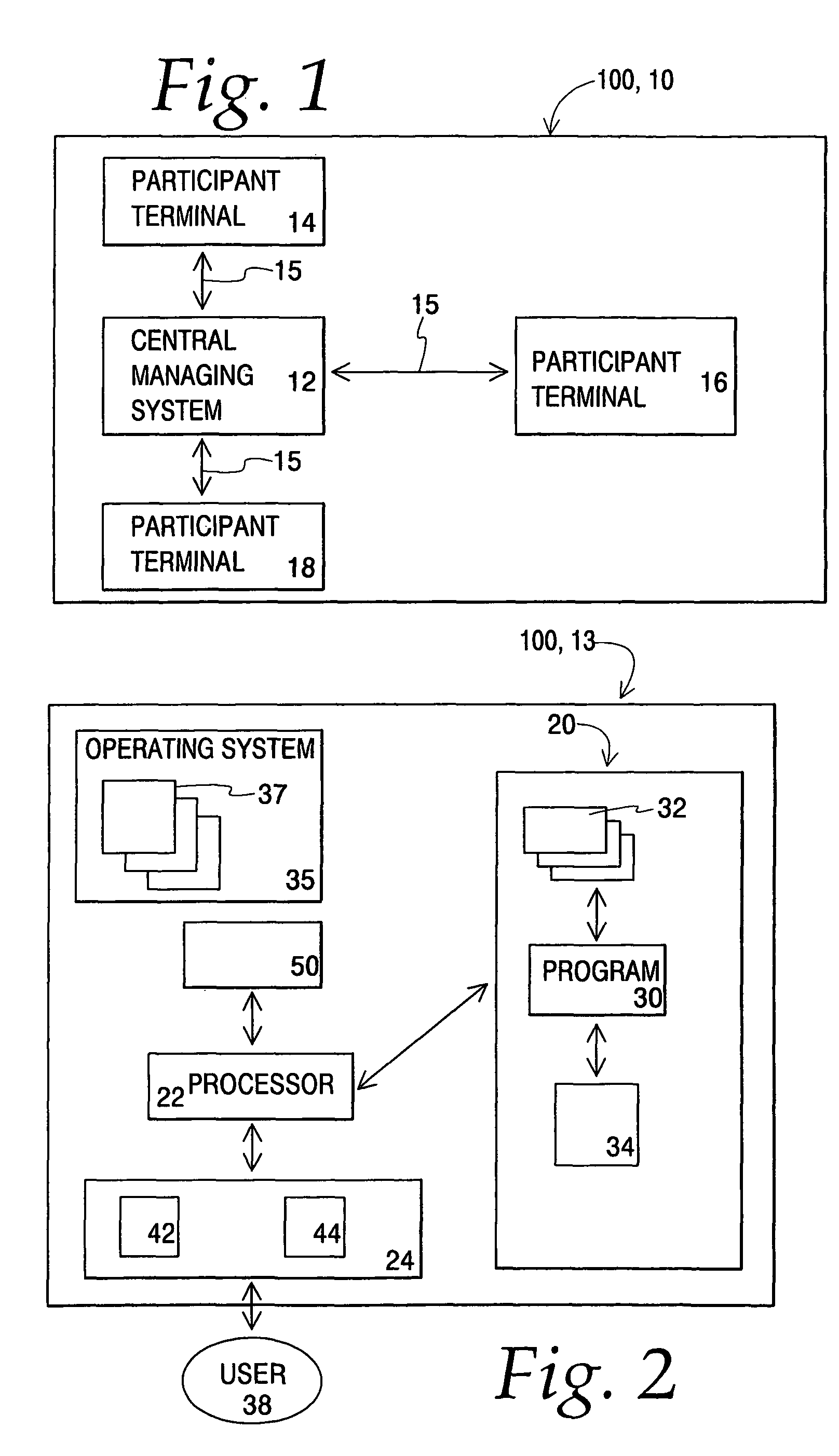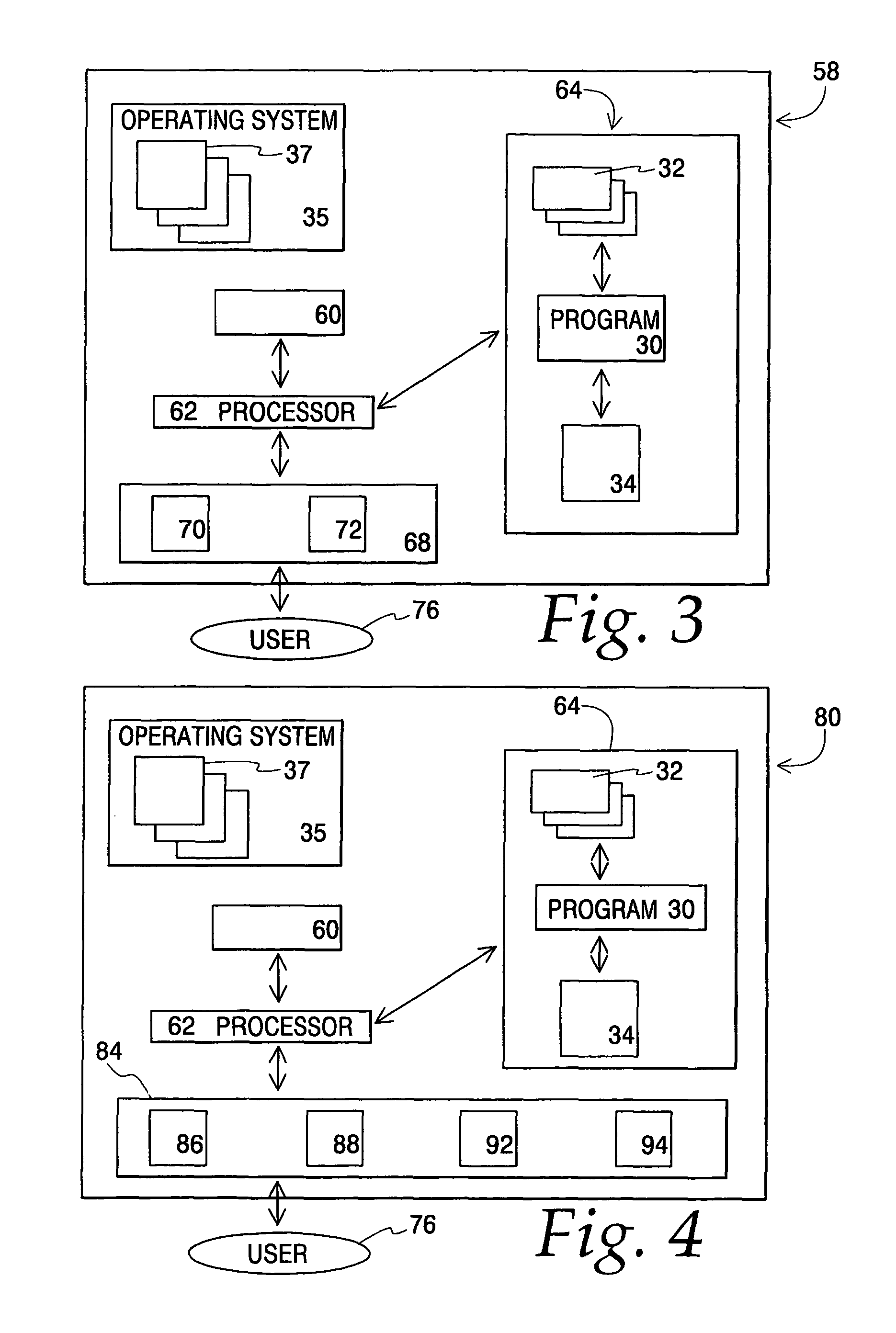Financial activity based on natural peril events
a technology of financial activity and natural peril, applied in the field of financial activities, can solve the problems of imposing potentially significant financial burdens arising from property damage, cannot be predicted with exact certainty, and does not provide any coverage for the outside areas of a home or business, so as to achieve the effect of boosting governmental financial assistan
- Summary
- Abstract
- Description
- Claims
- Application Information
AI Technical Summary
Benefits of technology
Problems solved by technology
Method used
Image
Examples
case i
[0301]For each new purchase, the adjustment parameter αtk is chosen according to the relationship between the pricing probability πt−1k and the market probability vt−1k (Equation 14) for the outcome k just purchased. In particular, αtk is chosen in order to move these two probabilities toward equality, allowing the pricing probabilities π to track, or “shadow” the market probabilities v. Three cases can be distinguished:[0302] πt−1k>vt−1k. Here the pricing probability for outcome k is too high relative to the aggregate market opinion from Equation 14. This condition can also be diagnosed from the relationship between the indicative payout and the par value (adjusted for time value of money), since
[0303]πt-1k>vt-1k=πt-1kcexp[rj / 365]Wt-1k,sothatWt-1k>cexp[rj / 365].(20)
That is, options for outcome k are overpriced if the indicative payout is greater than the (interest-adjusted) par value. For this case, increasing the pricing probability for outcome k would produce even...
case ii
[0304]Further consideration regarding the adaptive control algorithm is given later, herein, and is employed in the most preferred manner of setting prices for the First Landfall Market that is preferably implemented using the graphical user interface of FIGS. 24-49 (and less preferably, the graphical user interface of FIGS. 13-18) as discussed herein.[0305] Market equilibrium where πt−1k=vt−1k. Here the market is in equilibrium before the purchase of the next option t for outcome k. This purchase will raise the market probability for this outcome, vtk>vt−1k, so the pricing probability πtk should increase correspondingly. Explicit indication of outcome k using superscripts will be suppressed for notational simplicity). We wish to increase the pricing probability πt, using Equation 19, to match the increase in vt resulting from the payout dilution for this outcome produced by the purchase of one additional option. Therefore,
[0306]πt=πt-1+αtπt-1(1-πt-1)=vt=πt-1cexp(rj / 365)Wt=πt-...
case iii
Since, in all realistic cases Nt>>πt, the appropriate value for the adjustment parameter is αtk=1 / Nt−1k. Thus, an additional purchase moves prices relatively little if there are already a large number of options in existence for outcome k, but results in larger price changes if there are relatively few such options. Following the algebra in Equation 20, this condition can also be diagnosed from equality of the indicative payout and the (adjusted) par value.[0308] πt−1kt−1k. Here the options for outcome k are under priced, and αtk should be chosen to adjust πtk upward. Intuitively, this adjustment should be relatively modest (αtk≈1 / Nt−1k) for πt−1k≈vt−1k, and increase as the discrepancy between πt−1k and vt−1k increases, until a maximum value αmax is chosen corresponding to the maximum discrepancy between πt−1k and vt−1k. This maximum discrepancy occurs for Wt−1k=Fc. However, the specific form that the function for α should take between these two endpoints is not clear. Referring now...
PUM
 Login to View More
Login to View More Abstract
Description
Claims
Application Information
 Login to View More
Login to View More - R&D
- Intellectual Property
- Life Sciences
- Materials
- Tech Scout
- Unparalleled Data Quality
- Higher Quality Content
- 60% Fewer Hallucinations
Browse by: Latest US Patents, China's latest patents, Technical Efficacy Thesaurus, Application Domain, Technology Topic, Popular Technical Reports.
© 2025 PatSnap. All rights reserved.Legal|Privacy policy|Modern Slavery Act Transparency Statement|Sitemap|About US| Contact US: help@patsnap.com



